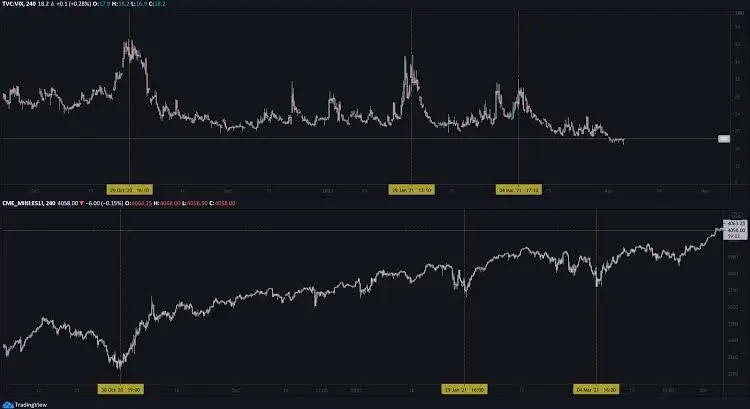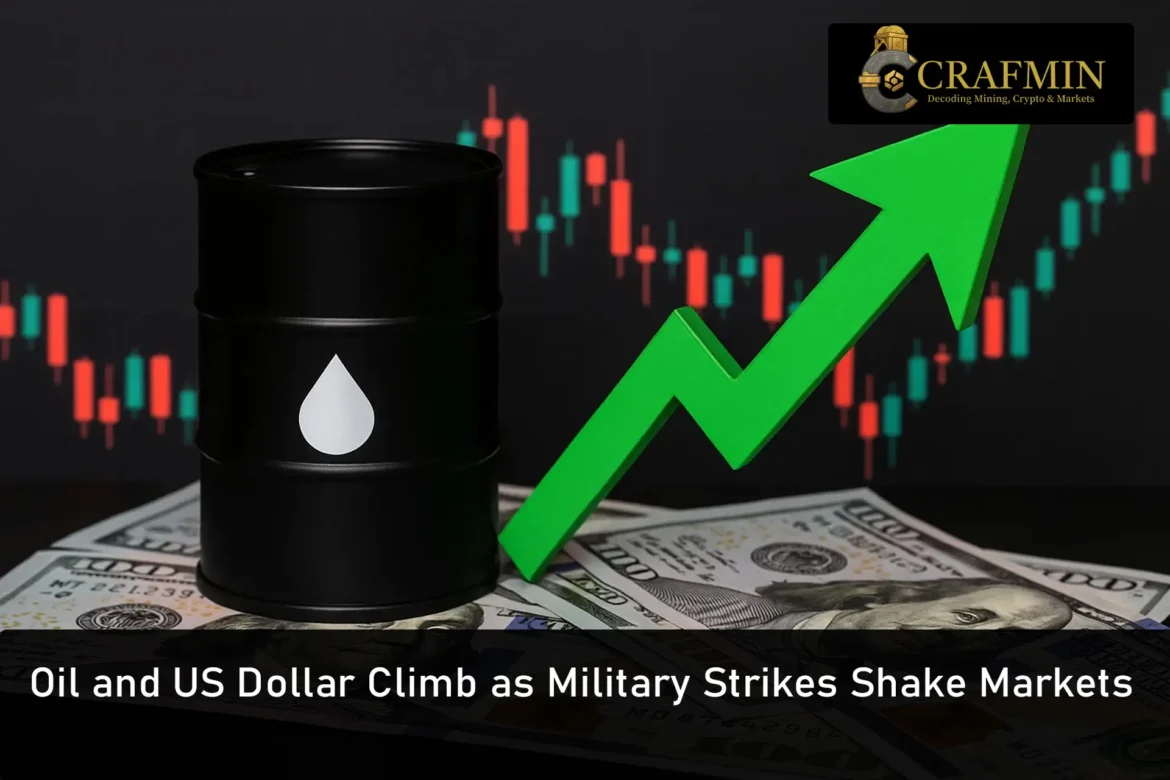Monday’s Asia trading session opened to immediate market shifts as news broke of US military airstrikes in the Middle East. The impact was swift and sharp—oil prices surged, the US dollar strengthened, and traders braced for a volatile week ahead.
As fears of an escalating conflict grow, investors are moving quickly into safe haven assets, sparking renewed momentum in global forex and commodities markets.

Military Strikes Spark Oil and USD Surge Across Markets ( Image Source: Wall Street Journal )
Asia Forex Snapshot: A Risk-Off Mood Sets In
Traders across Asia kicked off the session with caution:
- The Japanese yen remained steady as capital flowed into traditional safe havens.
- The Australian dollar dipped on weaker risk sentiment and a strengthening US dollar.
- The Chinese yuan softened slightly amid broader risk aversion and emerging market pullback.
While the reaction wasn’t frantic, the overall tone shifted decisively toward safety. Forex volatility is on the rise as global markets digest the news and prepare for potential fallout.

Asia Forex Markets Turn Defensive Amid Rising Tensions ( Image Source: FTMO Academy )
Trigger Point: What Sparked the Moves?
The US Department of Defense confirmed airstrikes against Iranian-backed groups in the Middle East. Positioned as pre-emptive and defensive, the strikes were launched just hours before the Asia-Pacific open.
Traders had little time to process the development before markets reacted. The result was a clear upswing in oil prices, a US dollar rally, and hesitation across equity and FX pairs.
This shift refocuses global markets on geopolitical market drivers—a theme that had recently faded behind inflation and interest rate narratives.
Oil Prices Jump: Supply Risks Back in Play
Oil markets immediately priced in renewed supply concerns, with WTI crude climbing above $81 and Brent nearing $85. Tensions in oil-rich regions often lead traders to add a risk premium to crude prices, and this event was no exception.
The market is especially sensitive to developments around the Strait of Hormuz—a vital chokepoint for global oil transport. Any hint of disruption there sends prices higher and raises the stakes for global energy stability.
US Dollar Gains on Safe Haven Demand
The greenback rallied across major currencies, gaining ground against high-beta pairs like the AUD, NZD, and a broad basket of emerging market currencies.
As global uncertainty builds, the USD remains the preferred refuge. Bond yields edged up, reflecting an increase in demand for stable assets, even as expectations shift on monetary easing timelines.
This is a textbook USD safe haven flow—capital seeks security when the global outlook darkens.
Also Read: Gold Price Outlook: Bulls Falter as Hawkish Fed Lifts the Greenback
Market Mood: Nervous but Controlled
Despite the dramatic headlines, there was no panic in markets—just a clear shift in tone. Volatility picked up, but remained within expected limits. Traders are keeping a close eye on fresh headlines for signals of escalation or de-escalation.
Many expect markets to tread water in a range-bound fashion unless the situation deteriorates or global leaders respond forcefully.
Still, options traders and institutional desks are already adjusting positions, especially in energy and commodity-related currencies. This points to a potentially turbulent week ahead.
Global Focus Returns to the Middle East
After months of laser focus on interest rates and inflation, Middle East tensions are now reasserting their influence on market dynamics.
Key developments to monitor include:
- Whether additional strikes or retaliations unfold
- Any new statements from OPEC members regarding production or security
- Shipping disruptions or rerouting through Gulf waterways
Energy-sensitive equities and industries are also likely to react in the coming sessions if oil prices hold or extend gains.
What Traders Should Do Now
Given the shifting dynamics, traders may want to consider:
- Leaning toward USD strength as long as geopolitical risks persist
- Watching commodity-linked currencies like the CAD and NOK, which could benefit from elevated oil
- Remaining cautious on risk-sensitive pairs like AUD, NZD, and EM FX
- Staying alert to headline risk, especially around defence and energy developments
- Tracking energy equities, which may gain if oil sustains higher levels
Markets thrive on momentum and confidence—both of which are vulnerable to fast-changing geopolitical narratives.
Final Thoughts
The oil and US dollar surge sparked by Middle East strikes serves as a reminder: markets remain sensitive to more than just inflation figures and central bank guidance.
This morning’s response was about fear, defence, and recalibration. As long as uncertainty surrounds military developments, traders will remain on edge—and capital will flow accordingly.
The forex market, commodities, and even equities are now being shaped as much by missile paths as by macro data points.
In such moments, vigilance is key. Watch the charts, but keep one eye on the headlines. In a fragile global environment, today’s small flashpoint can quickly become tomorrow’s market driver.

